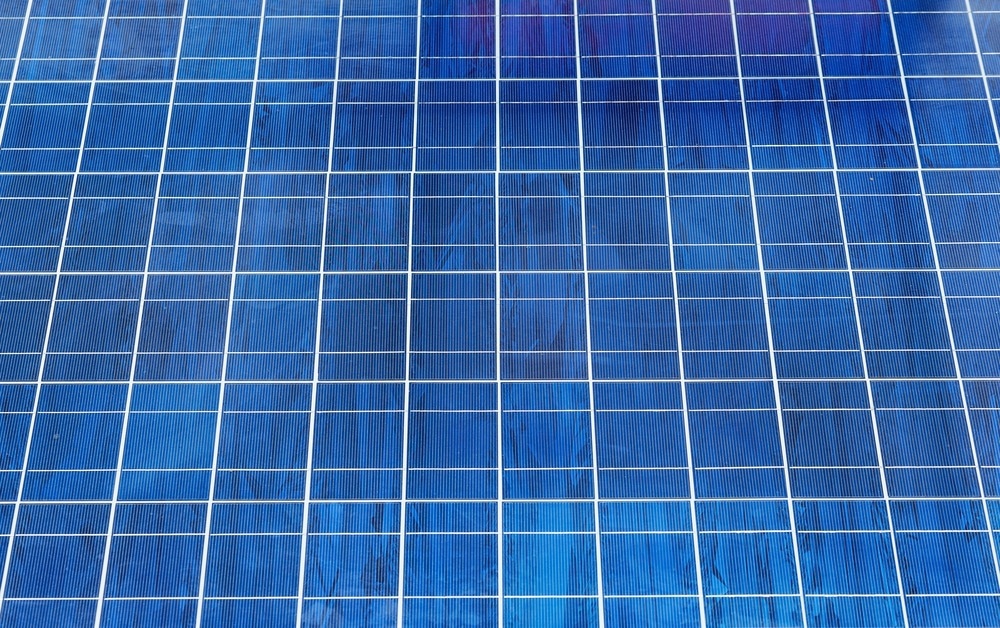The deposition of thin films through the spray coating technique is an industrially adopted method that help coat the non-planar surfaces and facilitates high throughput fabrication. In an article published in the journal ACS Applied Materials and Interfaces, perovskite solar cells were fabricated over rigid, non-planar surfaces using ultrasonic spray coating.

Study: Nonplanar Spray-Coated Perovskite Solar Cells. Image Credit: Jozef Klopacka/Shutterstock.com
This fabrication method of perovskite solar cells is devoid of limitations caused due to solution dewetting and subsequent run-off. The results revealed that the present method was suitable for spray coating the perovskite solar cells onto glass substrates, held at an inclination angle of 45 degrees.
The prepared devices had power conversion efficiencies comparable to the spray-coated substrates aligned horizontally. Based on the above observations that proved the robustness of the present process for deposition of perovskite solar cells on inclined surfaces, solar cell devices were fabricated over a convex glass substrate with a power conversion efficiency of 12.5%.
The present work demonstrated the fabrication of rigid, curved perovskite solar cells for the first time. Furthermore, the perovskite photovoltaics curved surfaces can be applied in automotive sensors and aerospace.
Fabrication of Perovskite Solar Cells
Perovskite solar cells are a type of solar cell with a perovskite-structured compound, which is either a hybrid organic-inorganic lead or tin halide-based material and used as the light-harvesting active layer. Perovskite exhibits favorable properties for solar cell applications, including high defect tolerance, high optical absorption coefficients, low exciton binding energies, and long charge-carrier diffusion lengths.
The evaluation of devices based on perovskite solar cells depends on the roughness of the interface, the cost of the devices, power conversion efficiency (PCE) values, and stability. Perovskite solar cells are the most emerging area of research among different new generation photovoltaic technologies due to their high PCE.
Fabrication of perovskite solar cells of a certain volume were realized by depositing perovskites from solution via slot die, blade coating, gravure, inkjet coating, and spray coating. Among these techniques, spray coating allows solution delivery through a nozzle from a distance. Thus, the spray coating method can be used to coat the non-horizontal and non-planar substrates rapidly.
The spray coating method is widely adopted to prepare perovskite solar cells with a PCE of 20%. To date, the spray coating method to create perovskite solar cells focused on depositing the perovskite layer with hole and electron transport layers. However, high-throughput manufacturing and coating of non-planar surfaces were proclaimed to be unachievable.
Spray-Coated Perovskite Solar Cells on Nonplanar Surfaces
In the present work, a glass/ indium tin oxide (ITO)/ tin oxide (SnO2) nanoparticles /formamidinium–cesium lead iodide (CsFAPI)/ 2,2′,7,7′-tetrakis[N,N-di(4-methoxyphenyl)amino]- 9,9′-spirobifluorene (spiro-OMeTAD)/ gold (Au) perovskite system was used to spray coat nonplanar and curved surfaces to prepare perovskite solar cells.
Here, the SnO2 nanoparticles adhered to the ITO surface strongly and served as an efficient electron extraction/hole blocking layer. The main aim of the present work was to determine whether the spray-coated perovskite solar cell solution onto a non-horizontal substrate adheres to the surface or dewets and run-off leading to uneven thickness across the substrate.
Thus, the spray-coated perovskite solar cell devices held at different inclination angles (up to 60 degrees) were explored to prove the robustness of the process. The results revealed that changing the velocity of the spray-head facilitated the deposition of coating with uniform thickness, and highly efficient perovskite solar cells were prepared with surface uniformity by spray coating the substrates held at an angle of up to 45 degrees away from the horizontal plane.
Based on the results, perovskite solar cells were spray cast onto plano-convex glass substrates to realize the devices with PCE of up to 11.7%. The present study can help achieve various non-planar surfaces integrated with perovskite solar cells for their applications in the automotive and aerospace industries.
Conclusion
To conclude, the spray-coated perovskite solar cells with the structure glass/ ITO/ SnO2 nanoparticles /CsFAPI/ spiro-OMeTAD/Au, with high efficiency was realized by holding the device at an inclination angle of up to 30 degrees away from the normal.
The SnO2 nanoparticles adhered to the ITO substrate served as electron extraction/hole blocking layer. Moreover, the spray-cast deposition method was tolerant toward non-horizontal surfaces. It showed very little flow of spiro-OMeTAD solutions and CsFAPI perovskite precursor across the surface, even at an angle of up to 60 degrees from the horizontal plane.
Based on the above findings, perovskite solar cells were fabricated over the surface of a convex glass lens, and a technique was developed to design both metallic charge extraction and ITO contacts over highly curved surfaces. This process helped fabricate devices onto the surface of a convex lens with a maximum PCE of 12.5%. Furthermore, this method is anticipated to have applications in the aerospace and automotive fields.
Reference
Thornber, T., Game, OS., Cassella, EJ., O’Kane, ME., Bishop, JE., Routledge, TJ., Alanazi, TL, et al. (2022). Non-planar Spray-Coated Perovskite Solar Cells. ACS Applied Materials and Interfaces https://pubs.acs.org/doi/10.1021/acsami.2c05085
Disclaimer: The views expressed here are those of the author expressed in their private capacity and do not necessarily represent the views of AZoM.com Limited T/A AZoNetwork the owner and operator of this website. This disclaimer forms part of the Terms and conditions of use of this website.